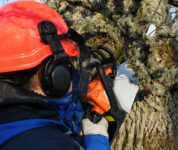Who Will Influence President-elect Trump?
How much will Donald Trump’s energy and environmental plans for the country be influenced by what others say and want? Given that Trump has never served in a government position—and, therefore, never experienced the outside pressures commonly imposed on public servants—it is difficult to conclude that his actions will be much influenced by any group, […]










